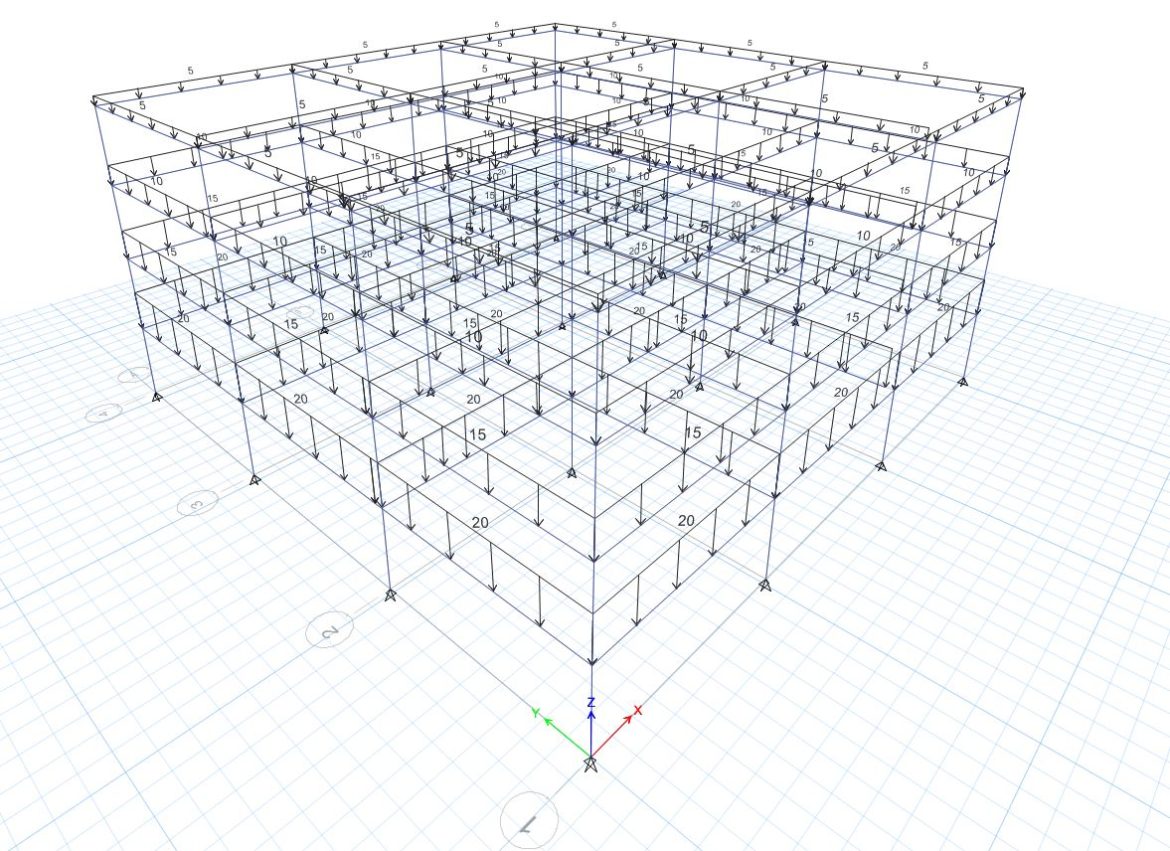
Design Load Considerations
The Load considerations and assumptions is the first thing to consider at the start of structural design. This is an important factor to bear in mind. Without the correct loads, the output of our design is either over design which is not economical and under design which can be means a fail design. By doing the right assumption, we can simply asses or estimate what would be the total weight of our structure. In this article, we will learn on how to assess the loadings of the structure or the building that we are designing.
Load assumption is actually depends on the type of occupancy that out project is. But before we go into further details, first we need to know about the different terms that we may be encountered during the loading considerations. There are a lot of different loads to consider in structural designing but there are actually three main terms in loading considerations, the Dead Load (DL) which is the self-weight of the structure, the Superimposed Dead Load (SDL) which composed of the floor finishes and other services and the Live Loads (LL) that composes of all the movable loads.
For a clearer understanding, we will base our design loading consideration according to ASCE7-10 “Minimum Design Loads for Building and other Structures”. What does this code recommends in each of the occupancy that we are designing? Dead Loads can easily be derived as this is the self-weight of the structure that we are considering, it can be derive manually or if we are using a structural design software, it is automatically calculated. The Super imposed Dead Load can be derived according to its unit weight and dimensions. As per the code, Live Loads are categorized according to its uses. For Live load considerations, refer to below images that are excerpts from ASCE7-10 Table 4-1 that the code recommends.
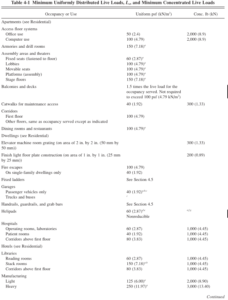
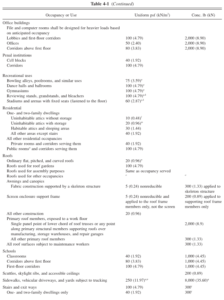
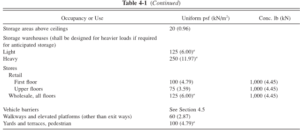
Other load considerations such as wind loads, earthquake loads needed in the design can be found on the different codes that the local building authority is authorizing with. Although there are many codes and standards that can be use in determining the loading on the structure or building that we are designing of, We will focus on the most popular code in consideration in terms of loading preparations. The most popular code that the designer is considering of as mentioned in this article can be found on ASCE7-10, Minimum Design Loads for Building and other Structures. You can read all of the contents of ASCE7-10 here.
Once all of the design loadings has been finalize, the load combinations for different cases has to provide and prepare as well in preparation to design proper.
Read also Design Load Combinations.
What about you? What loading codes and standards are you using and authorize by your local building officials? Are you using the same? Tell us about your thoughts. Feel free to leave your comments below and subscribe to our newsletter for any updates and new articles coming.




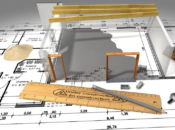

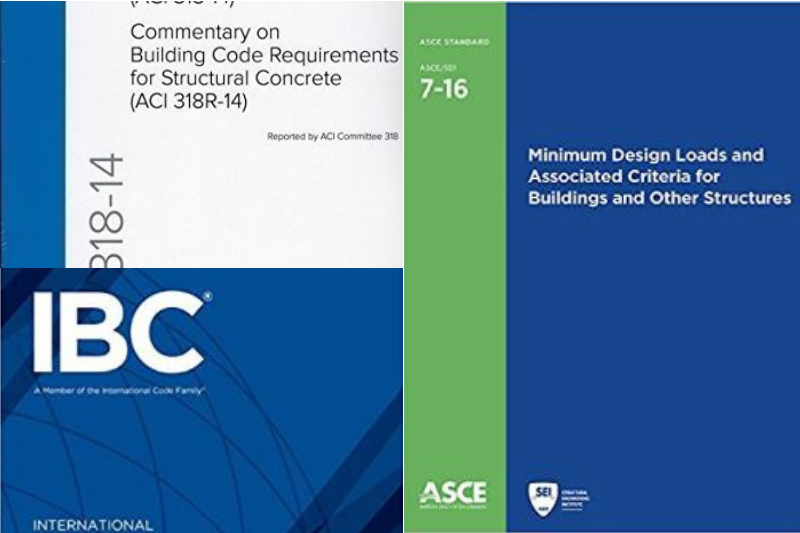


In Pakistan, we have been using UBC for seismic loading and for wind loads ASCE is preferred.Although Pakistan Building code has been developed which is more similar to UBC is commonly refereed during construction activities.
Regarding the local codes it varies from city to city and most of them have been copied from and later modified from various international codes like UBC, IBC and ASCE
It is very important and scientific way of description!Comment…